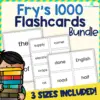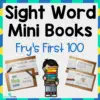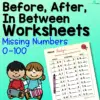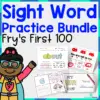A rainbow is a sight to behold. Viewing these colorful arches in the sky is fascinating to young children. For the little ones, remembering all the rainbow colors might be challenging. These songs will be a great help to them.
We list the nine best rainbow songs for children to make learning the colors a breeze.
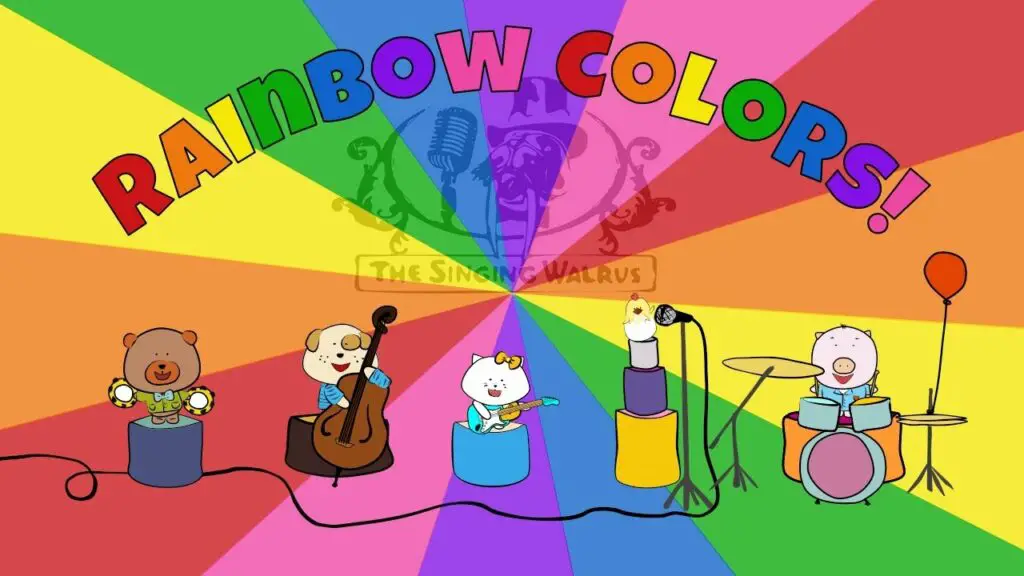
An adorable animated band sings the song that tells the colors of the rainbow in The Singing Walrus’s Rainbow Colors Song. Children will learn color recognition skills and associate colors with objects.
This song is perfect for circle time and great for practice. Use color charts or cards to help children with word recognition skills.
The song opens with the line “Tell me, tell me, what do you see?” and the children answer, “I see a (object). It’s (color).” Extend this activity by using these lines for a game of I Spy to help strengthen children’s concept of colors.
Ask them to look around and find objects of a given color. Children will learn to pay attention to details, observe, and develop patience and oral language skills. If possible, set up objects with the target color around the room.
The color-object pairs for this song are apple-red, carrot-orange, lemon-yellow, frog-green, fish-blue, flower-purple, and flamingo-pink.
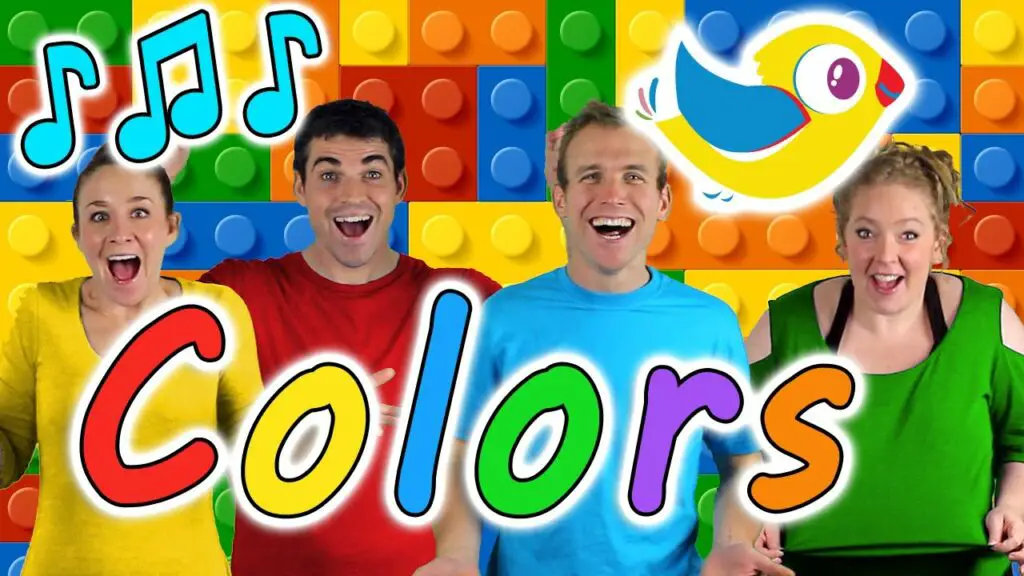
Colors of the Rainbow by Bounce Patrol is the perfect song for teaching sorting colors to children. Children will learn color recognition skills and associate colors with different objects.
Turn this song into a great activity by providing printed pictures of the objects mentioned in the song. Children can match or sort the colors and things as the song plays.
This is a great activity to improve children’s matching and critical thinking skills.
Some objects to color combinations are red for cherries, tomatoes, stop signs, apples, and firetrucks.
The song presents all eight colors of the rainbow and asks children to name the color of a given object at the end. This is a great way to help children recall the color names and help check what they remember from the song.
Repeat this step during circle time. Show children pictures or toys of the objects mentioned in the song and ask them if they can name the colors.
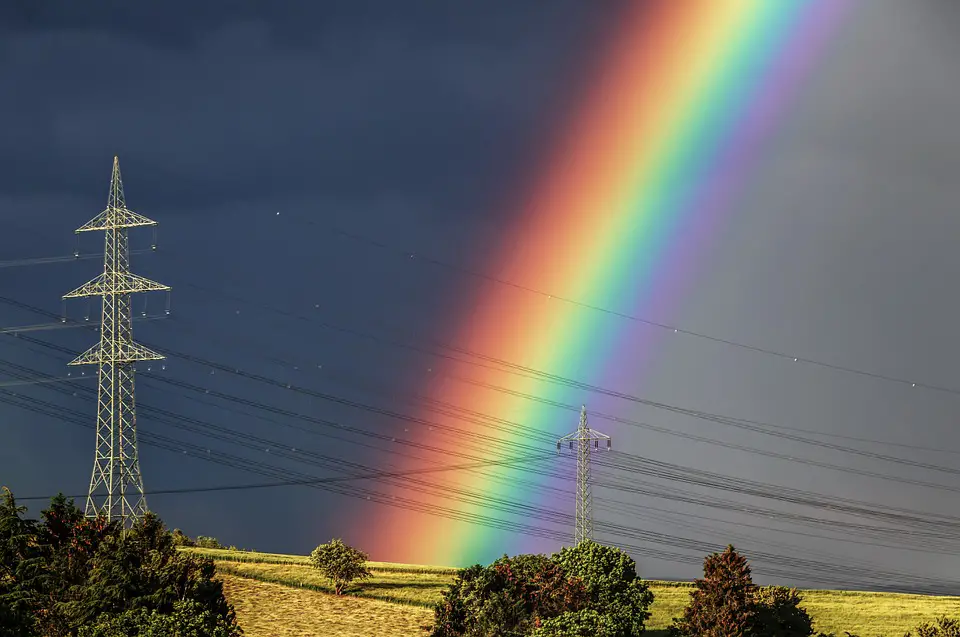
Envision a group of children wearing a colorful ensemble and marching to Rainbow Parade by Jean Warren. This song can be turned into a perfect stage performance for rainbow-themed presentations.
Children will learn color recognition and improve their gross motor skills, balance, and coordination as they march to a pretend parade. Have the children wear clothes resembling the colors of the rainbow and let them practice how to march.
The song does not mention the colors in the rainbow’s sequence but allows the children to line up in the correct order of colors to make it more realistic. Doing this will help children focus and improve their listening skills.
The book “Maisy’s Rainbow Dream” by Lucy Cousins is perfect for this song. In the story, a mouse named Maisy dreams of going on a journey with her friends to the Rainbowland.
As stated in the song, let the children carry additional props, like rainbow streamers.
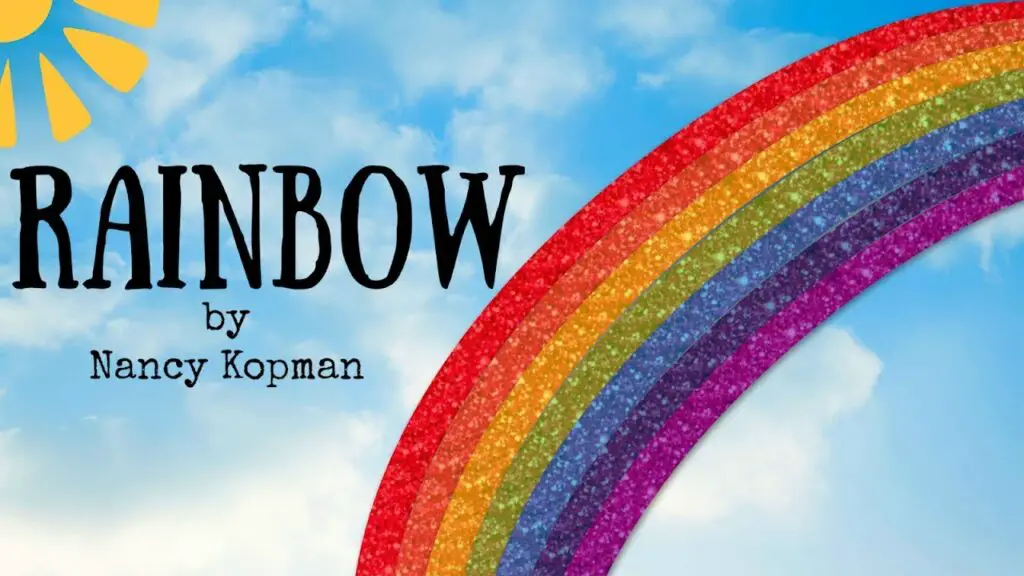
Children will learn not just the colors that appear on a rainbow, but it also explains how rainbows are formed in Nancy Kopman’s song Rainbow from Senses.
In a very relaxing tune, perfect for calming areas, the song mentions all seven rainbow colors in order. This will make it easier for children to learn color recognition and remember the rainbow’s sequence of colors.
Through a simple explanation, the song states that the white light turns into different colors we all see when the sunlight passes through the raindrops. This is an essential scientific fact for children to know.
Have children explore this idea through a Science lesson. Let them conduct experiments, read books, and watch videos explaining this colorful phenomenon.
Have the children cut colored paper strips into arch-shaped for them to put together in order as they sing the song. Doing this will help strengthen the learned concepts and make recalling the rainbow colors easy.
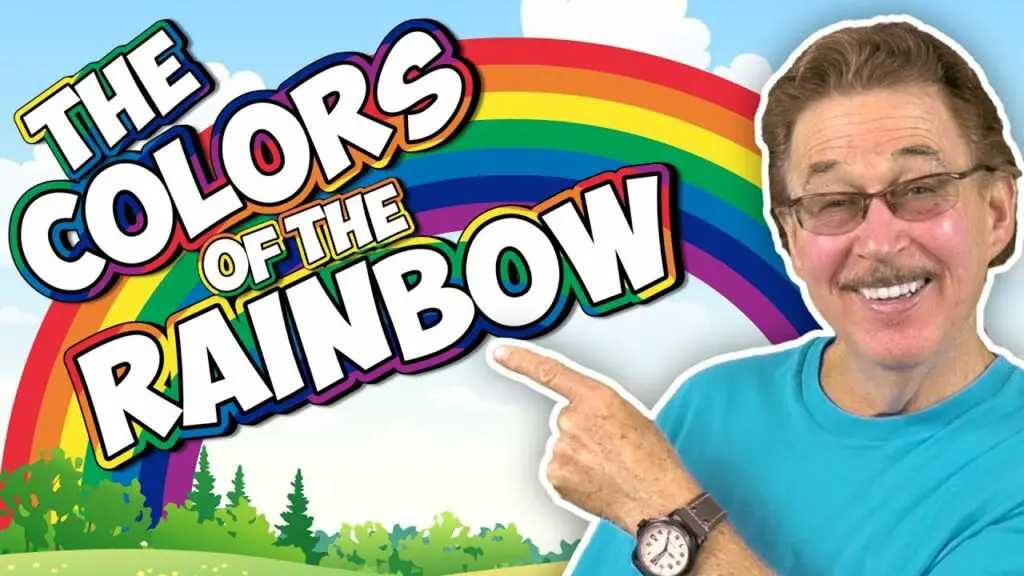
Colors of the Rainbow by Jack Hartmann will help children with color recognition skills. It mentions all the seven colors of the rainbow to help them remember the correct sequence.
The song encourages children to do some actions to help them associate these with the colors and is a good strategy for children who may have difficulty recalling ideas.
These movements will help with gross motor skills, coordination, and balance. These include shaking their head for the color red, and for the color orange, children are asked to raise their arms above their head and form it into an orange fruit.
For the color yellow, children are asked to jiggle like a Jell-O. They need to lean on one side for the color green. They have to bend forward to touch their shoes for the color blue.
They have to pretend to move slowly for indigo and fly like a jet for the color violet.
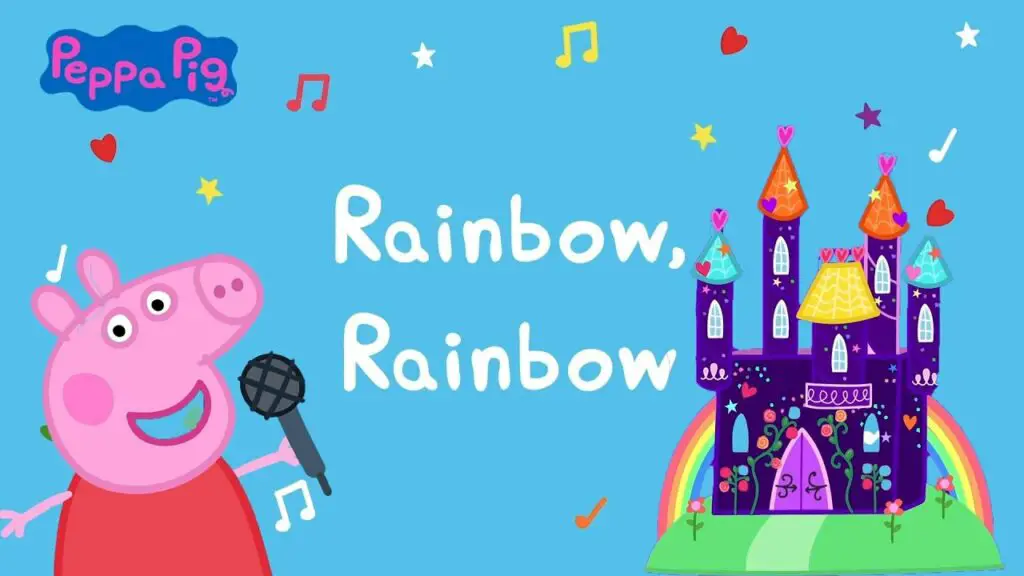
Fans of Peppa Pig will surely love her song Rainbow, Rainbow, which helps children learn color recognition skills. However, the colors are not mentioned in sequence.
Use this song to help children figure out the correct order of colors. Use manipulatives, such as paper strips or rainbow blocks, to help them arrange the colors properly. This activity will help build critical thinking skills in children.
The song also explains what the color indigo means. Peppa Pig says that it is “bluey-purple” or blue-violet. Explore this color by using paints or other coloring mediums to create one.
Doing this will help children with color mixing and allow them to differentiate indigo from other colors.
The song states that rainbows appear after the rain. With a science lesson, test this hypothesis. Have children observe if a rainbow can be seen when the rain stops.
Do this activity on rainy days and let children document their observations through drawings.
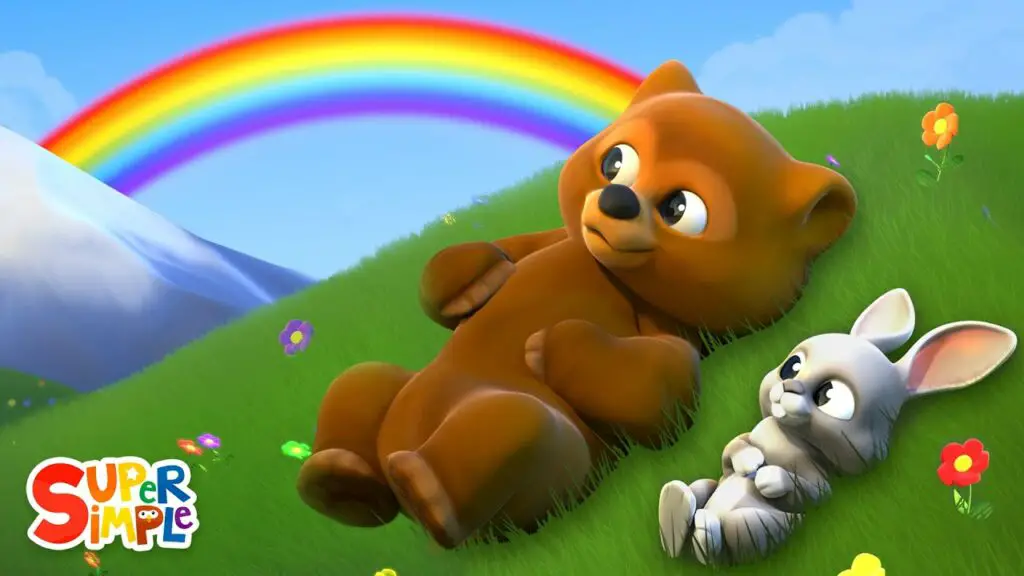
The Rainbow Song by Super Simple Songs tells of the colors that make up the rainbow. It presents flowers and animals that take on the rainbow colors to help children understand that our world is also filled with the same colors.
This song will teach children color recognition. Extend this song by exploring nature. With a Science lesson, show children pictures of different animals and plants representing the rainbow colors.
Have children sort and place these pictures to create a color spectrum. This will help build critical thinking skills and attention to detail and develop patience among young children.
Use pictures of apples and cherries for red, orange fruit and peppers for orange, bananas, and lemons for yellow, lettuce and broccoli for green, butterflies for blue, blueberries and concord grapes for indigo, and eggplant for violet.
If possible, serve snacks that follow the rainbow colors and explain the health benefits children will get from consuming these.
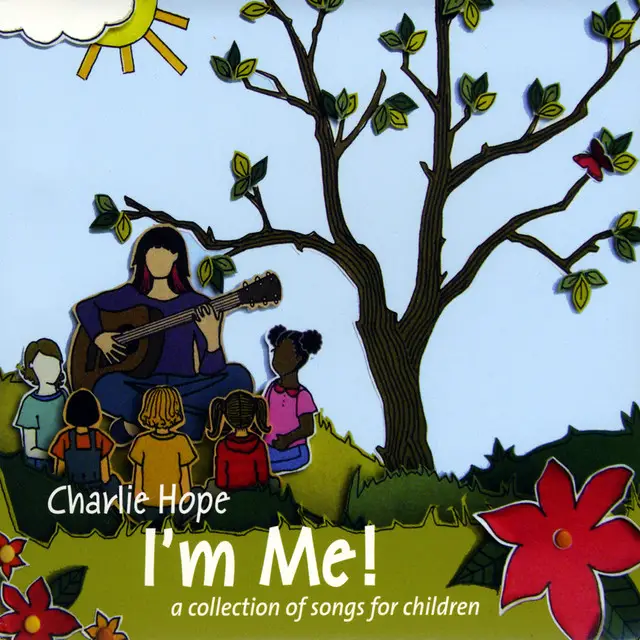
Rainbow by Charlie Hope tells of the colors of the rainbow poetically. However, only five colors are mentioned in the song, which does not follow the rainbow colors’ sequence. The colors are yellow, red, green, blue, and purple.
Aside from color recognition skills, teach children different emotions associated with colors. Use an emotion color wheel to explain how some colors may represent a particular feeling.
For example, red is used to show anger, yellow is for surprise, blue is for sad, green is for happiness, and purple is for disgust.
Present different scenarios during circle time or in pretend play area. These situations should reflect children’s familiar experiences so they can easily identify emotions. This is a great way to learn social-emotional skills.
Let the children role-play the scenarios or use stuffed toys.
With an art activity, have the children draw a portrait of themselves using colors that reflect their emotions.

Written for the movie “Wizard of Oz,” the song Somewhere Over the Rainbow tells of a child wondering what lies beyond the colorful arches in the sky.
Help children develop creativity by letting them create a story using the song’s idea as a story prompt. Write, “I think somewhere over the rainbow, there is a…” to which the children must provide information to complete the story.
Have them draw and color pictures and, if possible, let their story be on several small pages like a picture book. Doing this will help improve their fine motor and literacy skills.
Include the rainbow as part of the illustrations in their story. Ensure that the colors of the rainbow match the correct sequence.
Introduce the concept of collaborative writing by helping children creatively express themselves. This activity can be a week-long activity that children can devote a few minutes to work on daily.
Conclusion
Songs are vital for young children’s learning. These rainbow songs are perfect for teaching the seven colors that make up the rainbow. It is a great way to remember the rainbow colors’ sequence. Consider these songs for the rainbow unit study.
Thank you for reading. Come back and check out our other song articles soon.


